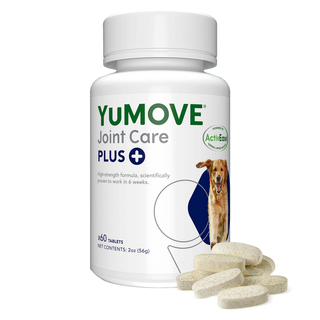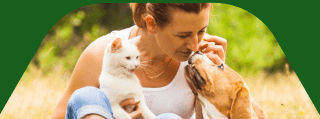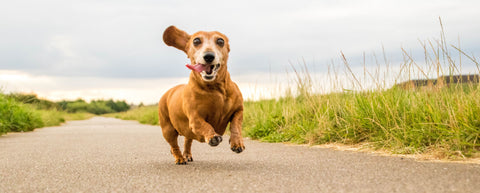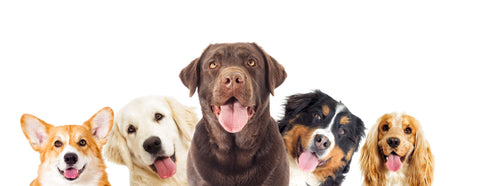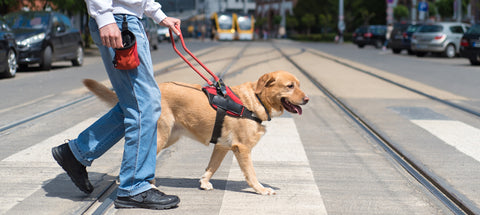There are plenty of dazzling perks to being a dog owner, but the opportunity for regular canine cuddles definitely ranks right up there. Nuzzling up to the special dog in your life can help to turn your frown upside down. It can free you from stress and remind you of the better things in life. And it can help both you and your dog to grow closer together.
But hugs? Unfortunately, it turns out that hugs – especially the lift-your-dog-into-the-air kind – may not be enjoyable for your four-legged friend. Here are the issues with hugging your hound, and what you can do instead.
Hugging stresses dogs out
Alright, let’s be clear: it’s not that your dog hates you touching them, or that they hate having a cuddle. It’s that they dislike the feeling of being trapped and lacking control.
Many people pick up their dogs to give them a hug – especially when the dog is a smaller breed. Unfortunately, having their paws dangling off the ground can be a stressful experience that comes with feelings of vulnerability. And if you squeeze your dog too hard when hugging them, there’s a good chance that’ll make them extra uncomfortable, too.
Keep an eye out for this. If you look at photos of people holding their dogs on social media, you might spot a few signs of an ill-at-ease pup, including:
- Licking their lips
- Yawning
- Flattening their ears back
- Showing the whites of their eyes
- Turning their heads away to avoid eye contact
Once they’ve been put down again, stressed dogs may also shake themselves off as if they’ve just bathed. That’s another clear sign that they didn’t enjoy the experience.

A hug can cause your dog to feel cornered (and that might be dangerous for you)
When dogs get stressed or frightened, they often want to run away and put some distance between themselves and the perceived threat. But if your dog is stressed and you’re holding them tight, that means they can’t get away. Not only is this likely to agitate and stress them out even more, but they might even bite you to try and get away.
This is why it’s not a good idea to let a child hug a dog. Not only is the child likely to misread the dog’s body language, but they might also squeeze the dog too tightly, or put their face too close to the dog’s face, which could cause the cornered canine to lash out.
How to show your dog some affection

Look, it’s like we said at the start of this article. Our dogs love us, and love showing affection – and they also love having that affection shown back to them. It’s just a matter of doing it the right way.
You don’t have to give your four-pawed pal a squeeze to let them know that you love them. Many dogs will be thrilled just to lay at your feet on a soft pillow or dog bed, relaxing and keeping one eye on you to make sure you’re not going anywhere.
Give your dog their favorite toy to play with, and they’ll be ecstatic at the gesture. Take them for a walk, and they’ll be over the moon. And play a game of fetch, or tug of war, with them, and they’ll think they’re in heaven.
Pet your pet
Petting your furry pal, and stroking their fur, is a great way of giving them some reassuring physical contact, while still allowing them to feel more autonomy than being ‘trapped’ in a hug would allow for.
Most dogs love being petted. Just be aware that many dislike being petted or stroked on the head or muzzle, and some will get very defensive about their bellies. If in doubt, try tickling your dog under their chin, scratching their chest, or stroking their lower back. Avoid any painful areas, such as after surgery or an injury, or stiff joints in senior dogs.

Petting your dog helps both of you feel happy (and stress-free)
It’s not exactly a secret that dog owners feel good when petting their four-pawed friends. In fact, that feel-good factor goes both ways, and seems to do plenty of good for pup and pet-parent alike.
Research has found that when Guide Dogs get just five minutes of human interaction, their levels of the hormone oxytocin – associated with feelings of warmth and bonding – rise significantly, and a similar phenomenon is thought to happen on the human side, too.
And if the feel-good part of petting your pooch wasn’t already compelling enough, researchers have also found evidence that petting dogs helps to lower levels of the stress hormone cortisol in humans.
Keep your canine companion feeling calm, collected, and cared for
Showing your dog how much you care is one of the most important things you can do, as a loving pet parent. It’s great for your dog’s mood and wellbeing, and it’s great for yours, too. It’s also an essential part of the bonding process. For highly strung hounds who could use a bit of extra support, consider giving them our one-a-day YuCALM supplement, for stressed or nervous dogs.

